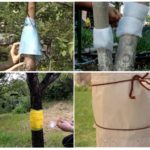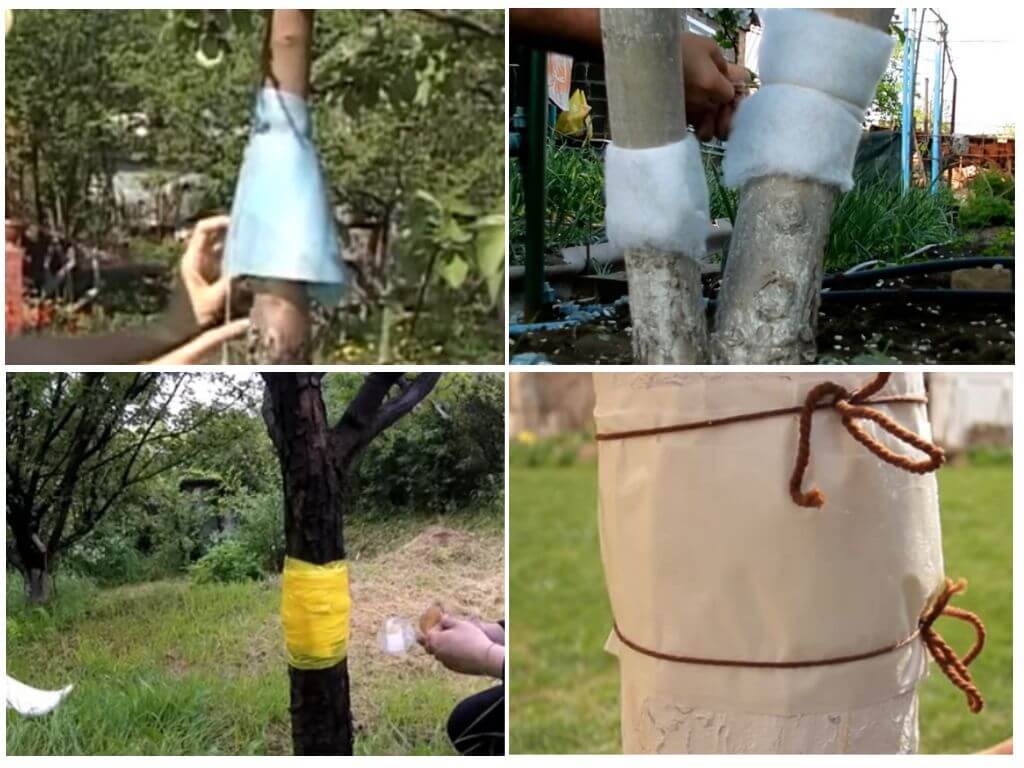Ant traps in the trees with their own hands
Content
- Ant traps in the trees
- Ant antler belt
Today, the chemical industry produces a huge amount of a variety of tools designed to combat ants. This list includes not only aerosols and gels, but also pencils and powders. All these ant baiting agents combines the underlying insecticidal component.However, it is not always possible to use products of similar composition. In such a situation, traps and traps from ants on fruit trees come to the rescue.
What is a trap
Not wanting to "feed" the garden with chemistry, many gardeners are anti-ants folk remediesinventions. Making do-it-yourself ant-traps in the trees is a snap. Here are a few options for such designs.
Tire trap
Every motorist has old car tires. Of these, it is very easy to build a pool, which the pests will not be able to swim across. It is enough to cut the tire along the center to get a pair of individual rings.
A ditch should be dug around the tree or bush infested with ants, the diameter of which will correspond to the cut out ring. A crown is put on a tree trunk through the crown and the container is filled with water. Such a water barrier will reliably protect the planting from pests.
On a note!
If the crown of the tree is too large, the rubber ring must be cut and installed in a similar way. To seal the joint using adhesive tape or clay.
Scotch trap
To get rid of ants on trees, you can make another device for catching insects. To do this, only scotch is needed. Sticky tape on trees is wound like a belt. Protective film on top must be removed. Such a simple structure will serve as a good barrier to ants.
When using single-sided tape, it is wound on the trunk with adhesive side up. Having reached a sticky belt, the legs of crawling insects will get stuck in it. The same ants, who manage to escape from the "captivity", will leave this tree forever.
Trap Belt Features
The hunting belt is a wide strip made of various materials (burlap, polyethylene, matting, rags or straw). The device eliminates ants and other insects that live on the trunks of trees. Such a mechanical method of plant protection is most effective for pests and does not pose any danger to human health (with the exception of poisonous trapping belts).
The principle of the trap belt is similar to the effect of sticky tape for flies. Periodically, the belt is cleaned of insects adhering to it or replaced with a new design.
Trapping belts are of three types: sticky, dry and poisonous.
Sticky Belt
You can make a trapping belt for ants in the garden with garden glue and thick paper. This option is effective even in wet weather, as this type of glue is moisture resistant and does not dry out for a long time.
From paper cut a rectangular strip, the length of which will correspond to the diameter of the trunk. The width of the belt is within 25 cm. Glue or resin is applied to one side of the strip. The sticky surface will serve as the outer side of the future belt.
Sticky trap attached to a wooden surface of the trunk at a distance of 0.5 m from the surface of the earth. To under the belt could not get through ants, slots on top and bottom covered with clay.
Dry Trapper Belt
The most common trap option for protecting apple trees, pears and other fruit trees in the garden is a dry trapper belt. Gardeners usually prefer funnel belts or gates.
- Making a funnel is a snap. It is usually made at a height of 0.5 m from the surface of the earth. For this you will need heavy paper. It should girdle a tree trunk so that a cone-skirt is obtained.It is fixed tightly with a rope, the remaining gaps are covered with clay, thereby preventing the penetration of ants.
- The gate is a no less popular trap garden black ants, which must be made of rubber. Making the design will take no more than a quarter of an hour. From a dense rubber, whose width is 25 cm, cut a rectangular piece of length equal to the circumference of the trunk.
Rubber wound on a tree so that the design was similar to a turn-down collar with curved edges. The ends of the strip are glued with rubber glue, and sunflower oil is poured into the resulting trap. Occasionally ant traps cleaned from insects and filled with sunflower oil.
On a note!
Trapping belts need to be changed periodically as the tree grows.
Poison Trapper Belt
Despite the fact that poisonous belts are recognized as the most effective in the fight against ants, they are still not so often used on apples and other fruit trees. Many gardeners believe that the poison is very dangerous for future fruits. However, this statement is not entirely true. Due to the fact that such devices are installed in the lower part of the trunk, poison cannot penetrate into young shoots and apples.
To rid the site of ant attacks, it is necessary to cut a strip from burlap, similarly to the methods described above. The fabric is impregnated with poison and wrapped in a cone around the barrel. So that the insecticidal component does not evaporate, the upper part is wound with a film and strengthened with twine. Having got on a poisonous site, ants perish from poisonous vapors.
Poisonous trapping belts are the most effective way to combat ants building up at the roots of the tree or spoiling the fruits. tracks. However, one should not forget that when organizing a poisonous device, it is necessary to use protective equipment (mask and gloves).









